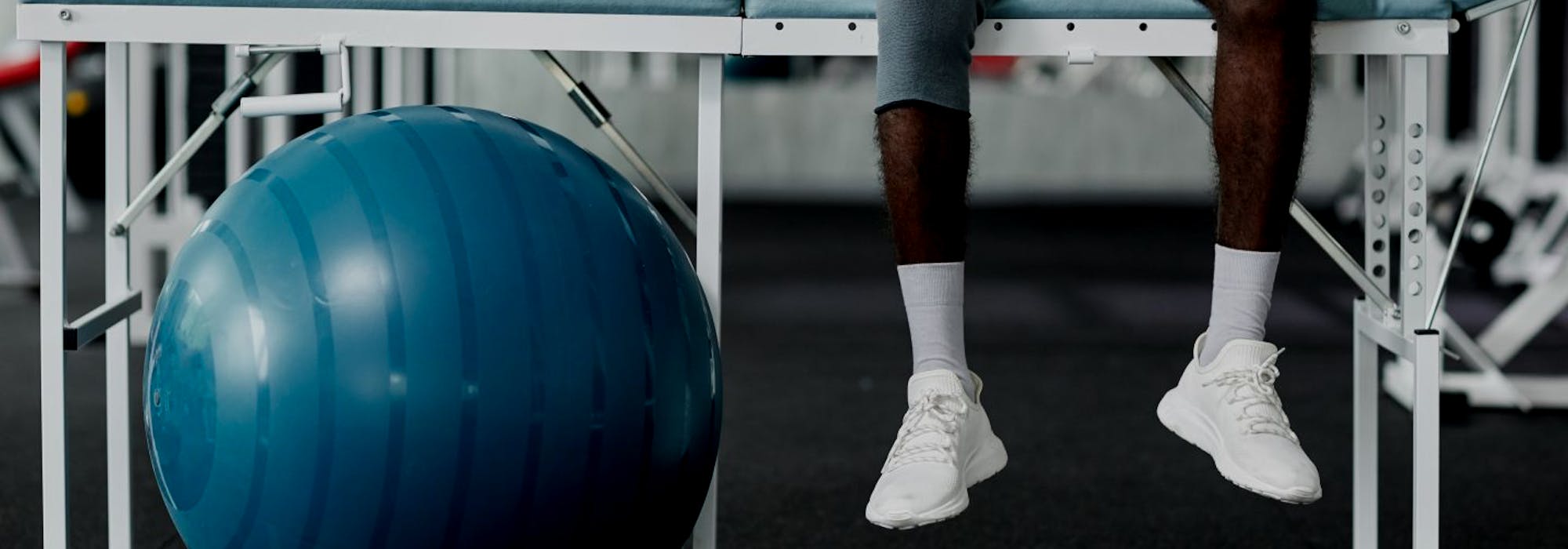Hip and knee pain is never easy to deal with. Some people experience one or the other, while many also experience both together. The issues caused by a knee or hip injury can have a domino effect that causes other injuries to occur. For instance, a knee injury can cause problems with the hip, and vice versa. It is extremely difficult to move without utilizing your hip and your knees, so it makes sense to address injuries to these areas as soon as possible. You do not have to accept ongoing pain — in most cases, physical therapy can lead to a reduction or elimination of hip and knee pain. So if you are suffering from hip and knee pain, please contact us. Let one of our Tucson physical therapists help you recover and gain your mobility back.
How Does Hip And Knee Pain Develop?
Hip pain is more common than many people realize, especially in older adults. The hip joint is large and strong, but it is prone to injury and degradation just as much as any other joint. When overused, the hip can be damaged in ways that do not repair on their own. And injuries like falling can lead to hip injuries and even breakage in certain circumstances.
There are a variety of things that can cause hip pain. These include:
- Injuries in the workplace
- Exercise and sports injuries
- Tendinitis
- Strains in tendons and/or muscles
- Osteonecrosis
- Cancer
- Bursitis
- Other causes
While there are certainly many people who struggle with hip pain, knee pain is even more common. As with the hip, aging, overuse and sudden injury can all lead to knee pain. The bones in the knee can be damaged, as can the ligaments and cartilage. Knees are quite flexible, which tends to result in joints that are more easily injured than those that are less mobile.
Some other causes of knee pain can include:
- Injuries from sports
- Injuries from work
- Torn meniscus
- Automobile accidents
- Bursitis
- Arthritis
- Medial plica syndrome
- Dislocation
What Does Physical Therapy Do For Hip And Knee Pain?
Physical therapy is preferred for healing hip and knee injuries for many reasons. The methods used by physical therapists are gentle and non-invasive, so there is minimal risk of side effects. Physical therapy also makes it easier to avoid further injury because therapy results in a stronger and more mobile body, which is less prone to hip and knee injuries. There is the added benefit of physical therapy being drug-free, so you have no risk of adverse reactions or side effects from powerful prescription medications.
The therapies offered by your physical therapist are excellent for patients of all ages and physical abilities. Your treatment will be personalized, based on your body and your specific circumstances, so there is no risk of being given treatments that are not appropriate for your situation.
When you go see a Tucson physical therapist, you will be given a careful examination to determine the cause of your hip and knee pain. Once the physical therapist has a clear picture of what is going on, he or she will design a custom treatment plan that includes various exercises and advice on how to go about your day-to-day life without causing further injury. The combination of strengthening and increasing flexibility while avoiding aggravating the injury is a winning one — something countless patients have discovered after being treated by a physical therapist.
Many people want to avoid surgery if at all possible. Physical therapists work to provide you with effective treatments that will ideally help you avoid surgery. But if you do require surgery, working with a physical therapist in both pre-surgical and post-surgical therapy will ensure you come out of the situation as strong and mobile as possible.
Discuss Your Hip And Knee Injuries With A Tucson Physical Therapist
If you are dealing with a hip injury, a knee injury or both, we would like to help. Relieve pain in knee with physical therapy. Please contact us today at Tucson, AZ to schedule an appointment with a highly-trained Tucson physical therapist. Get the relief you deserve from your injury.FAQs
What Causes Knee Pain?
Your knees are hinge joints that allow for the forward-and-backward motions within the joint.
The knee is one of the largest joints in your body, made up of a complex system of bones, tendons, and ligaments. Because of this, the knee can be easily injured due to overexertion or repetitive motions. Additionally, knee pain can be caused due to an underlying ailment. Some of the most common causes of knee pain are sprains, strains, fractures, tears, dislocation, tendinitis, bursitis, and arthritis.
What Can I Do To Relieve Knee Pain?
There are some actions you can take on your own to relieve your knee pain, including wearing properly fitted shoes, using hot and cold remedies, stretching, and taking breaks from physical activity when noticing painful flare-ups. However, physical therapy is the best way to find consistent, long-lasting relief for your knee pain. Through manual therapy, strength training, flexibility training, balance training, and pain-specific exercises, physical therapy can get your knees moving comfortably once again.
How Do I Get Rid of Knee Pain?
Frequently consulting with a physical therapist is the best way to continually manage your knee pain. Having a regular physical therapy checkup ensures that your joints are working at their peak performance. In addition, any problems will be discovered early, preventing the onset of arthritis and joint injury. If you do have arthritis or have had surgery, then a regular physical therapy check-up is especially important, in order to make sure that your knee pain remains at bay.
How Do You Diagnose Knee Pain?
Our physical therapists will examine your knee for signs of misalignment or structural damage, in addition to examining your stance, posture, gait, and range of motion. If needed, additional tests (such as x-rays) may be conducted. This will help determine the cause of your knee pain so we can treat it accordingly. After your initial evaluation is complete, your physical therapist will prescribe a physical therapy plan specifically for you, aimed at relieving unnatural stresses and strains, and normalizing your joint function.


